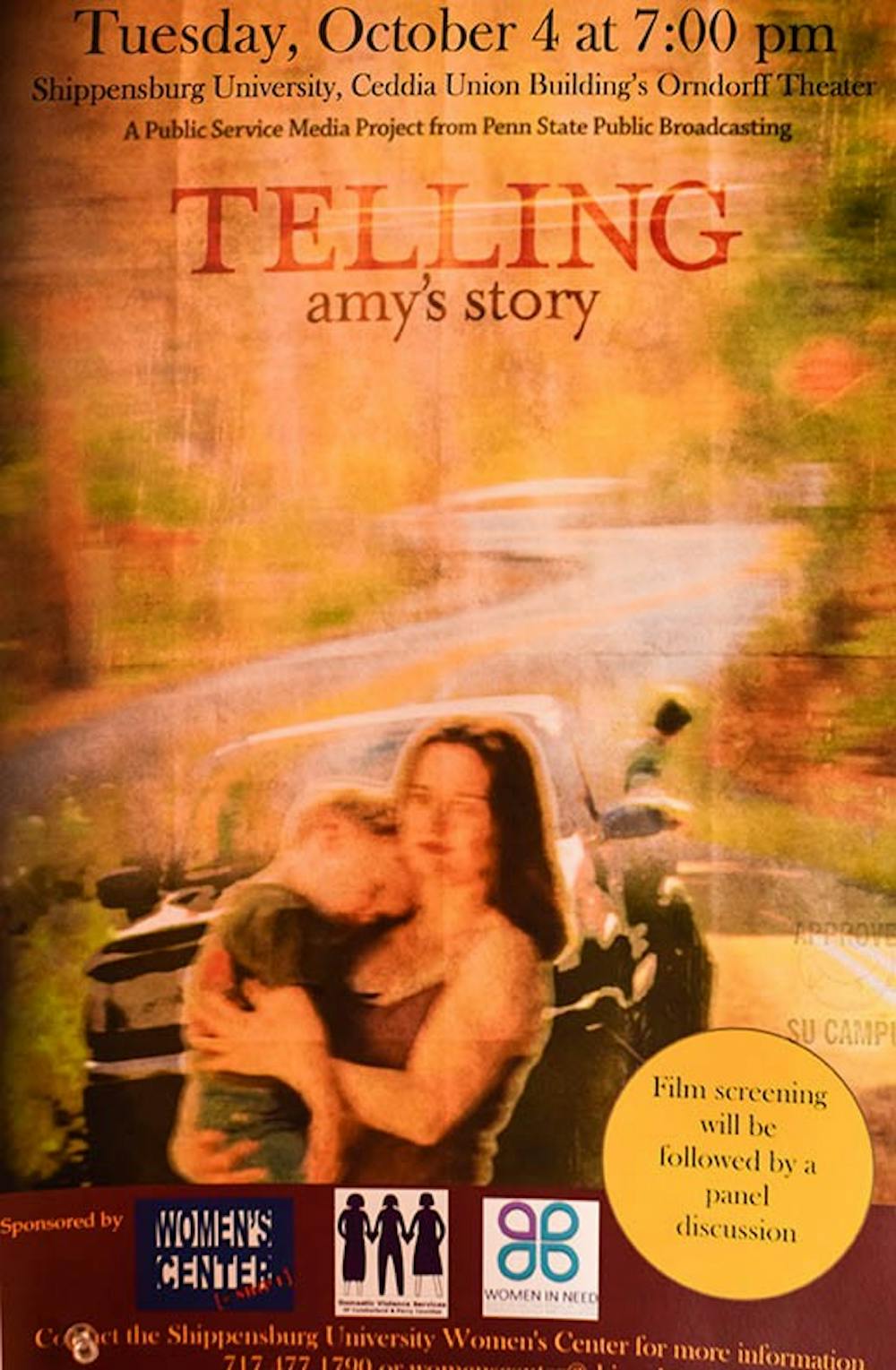The Shippensburg University Women’s Center commemorated the beginning of Domestic Violence Awareness month with a public screening of the documentary, “Telling Amy’s Story,” on Oct. 4 in the Ceddia Union Building Orndorff Theatre.
Following the domestic violence timeline leading up to the 2001 murder of Amy Homan McGee by her husband, Vincent McGee, in State College, Pa., “Telling Amy’s Story” hits a little too close to home for many. However, taking place a mere two hours away from Shippensburg, this story is a needed wakeup call for the ignorant, as it advocates the fact that domestic violence can happen anywhere, even in Happy Valley.
The documentary was commentated by detective Deidri Fishel, the primary investigator and case manager for the State College Police Department at the time. However, the film was not limited to the single perspective of Fishel. The voices of Amy’s coworkers, her mother and a police officer who crossed paths with Amy during the string of events that ultimately led to her death, were also featured in various parts of the film.
Each individual interviewed during the documentary added a separate piece to the puzzle of how the glaring signs of domestic violence went unnoticed and were disregarded time after time. Amy was, understandably, afraid to tell anyone about the abuse she was suffering from Vincent, in the crippling fear that revealing the truth would do nothing but make conditions worse. Amy kept her pain and distress to herself a vast majority of the time, leaving her friends and family in the dark.
Fishel walked viewers down the timeline of Amy’s relationship with Vincent, and between each step, actors brought to life the many internal and external conflicts Amy faced along the way. While actors could never possibly portray the emotions and situations that Amy experienced in their entirety, the addition of a visual assisted viewers in making a connection between the events being described to them by the detective, and how they were likely to have occurred.
“Telling Amy’s Story” was rooted in a motive far deeper than dissecting a domestic violence murder case. It made it a priority to shine light on the fact that domestic violence can stem from relationships that once appeared happy and healthy. The signs of an unhealthy change may not be glaringly obvious to outsiders until it is too late.
Although I, like many, am a fan of happy endings, the unhappy ending of “Telling Amy’s Story” speaks louder than a happy one ever could. While Amy faced an incredibly unfortunate and grievous ending, she is a symbol of hope for all who have been victims of domestic violence.
As individuals, we are each called to action in “Telling Amy’s Story,” whether it be by teaching our future sons how to respect a woman, teaching our future daughters what a genuine loving relationship is like or simply by acting as an example for those who may not know a world outside of abuse. We can each play a significant role in paying tribute to the life of Amy, and prevent future cases of domestic violence.




The Slate welcomes thoughtful discussion on all of our stories, but please keep comments civil and on-topic. Read our full guidelines here.